Track plan at a glance Name: Town & Country Traction Co. Originally appeared in the November 2002 issue of Model Railroader. Click here to download a PDF of this track plan […]
Town & Country Traction Co.
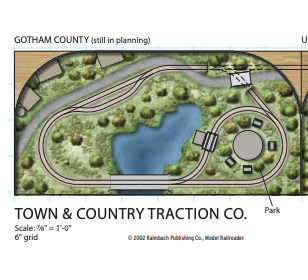
Action may be required on your Trains.com account in order to continue accessing content. Click here to learn more.

Track plan at a glance Name: Town & Country Traction Co. Originally appeared in the November 2002 issue of Model Railroader. Click here to download a PDF of this track plan […]
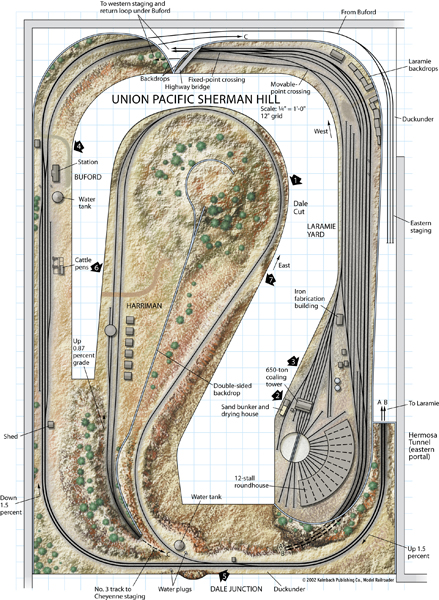
Track plan at a glance Name: Union Pacific Sherman Hill Scale: HO (1:87) Size: 22 x 34 feet Prototype: Union Pacific Period: spring 1954 Style: around-the-walls and peninsula Mainline run: 370 feet Minimum radius: 48″ Minimum turnout: no. 10 on main line, no. 6 in yards Maximum grade: 1.5 percent Originally appeared in the March […]
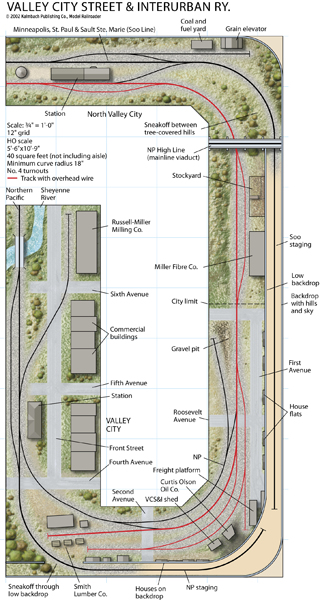
Track plan at a glance Name: Valley City Street & Interurban Ry. Scale: HO Size: 5′-6″ x 10′-9″ Minimum radius: 18″ Minimum turnout: no. 4 Originally appeared in the November 2002 issue of Model Railroader. Also appeared in 102 Realistic Track Plans. Click here to download a PDF of this track plan […]
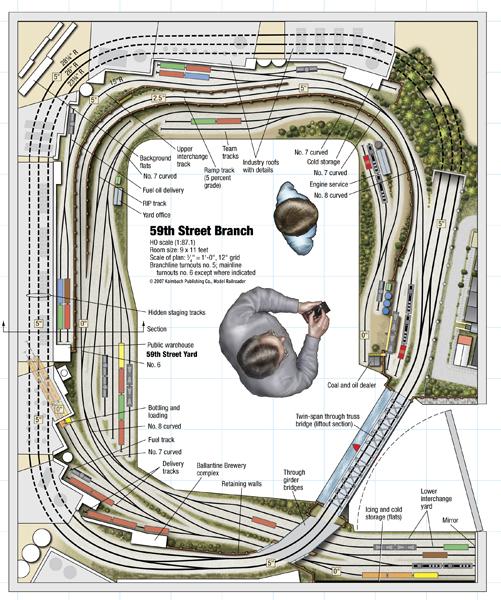
Click on the image to download a PDF of this track plan. Track plan at a glance Name: 59th Street Branch Scale: HO (1:87.1) Size: 9 x 11 feet Prototype: Erie RR Era: 1950s Style: around the walls Mainline run: 40 feet Minimum radius: 23″ except where marked Minimum turnouts: no. 6 on main line, […]
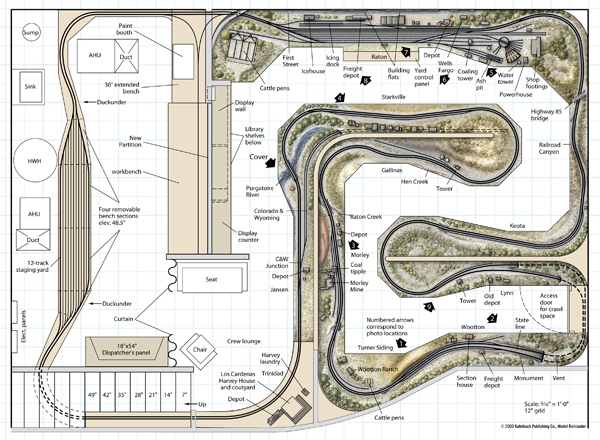
Track plan at a glance Name: Atchison, Topeka, & Santa Fe Ry. Scale: N (1:160) Size: 22.5 x 29 feet Prototype: Raton Pass on the First District of the New Mexico Division Period: summer 1950 Style: linear walkaround Mainline run: 202 feet Minimum radii: 21″ on visible track, 18″ on hidden track Minimum turnout: no. […]

Track plan at a glance Name: Denver Rio Grande & Southern RR Scale: Sn3 Size: 11 x 14 feet Prototype: narrow gauge mountain railroading Period: 1930s through 1950s Style: around the walls Mainline run: 70 feet Minimum radius: 30″ Minimum turnout: no. 6 Maximum grade: none Originally appeared in the 2001 issue of Great Model […]
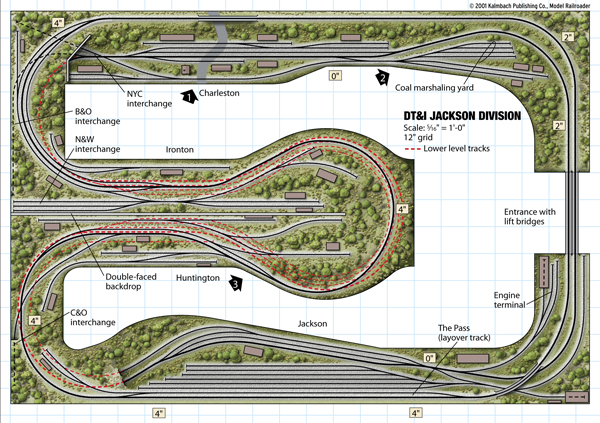
Track plan at a glance Name: Detroit, Toledo & Ironton RR, Jackson Division Scale: HO (1:87) Size: 15 x 22 feet Prototype: theoretical southern extension of the DT&I Period: 1956 Mainline run: 200 feet Minimum radius: 30″ Minimum turnout: main line, no. 6, yard and industry tracks, no. 4 Maximum grade: 2 percent Originally appeared […]
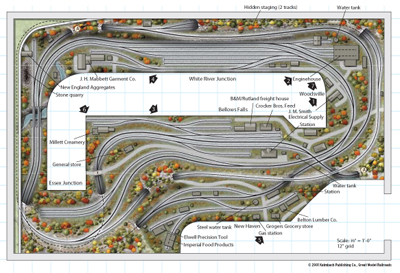
Track plan at a glance Name: Green Mountain Division of the Boston & Maine Scale: HO (1:87) Size: 12′-8″ x 20′-0″ Prototype: Boston & Maine, Central Vermont, & Rutland Period: fall 1958 Style: around the walls Mainline run: 112 feet Minimum radius: 28″ Minimum turnout: handlaid to fit; most no. 6 Originally appeared in the […]
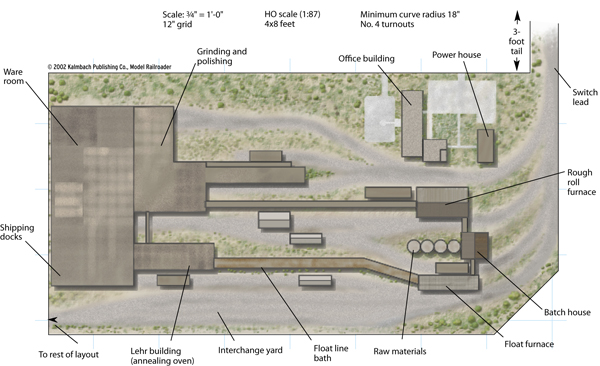
Track plan at a glance Name: Pittsburgh Plate Glass Scale: HO (1:87) Size: 4 x 8 feet Minimum radius: 18″ Minimum turnout: no. 4 Originally appeared in the January 2003 issue of Model Railroader. See a PDF version of this track plan by clicking here. […]
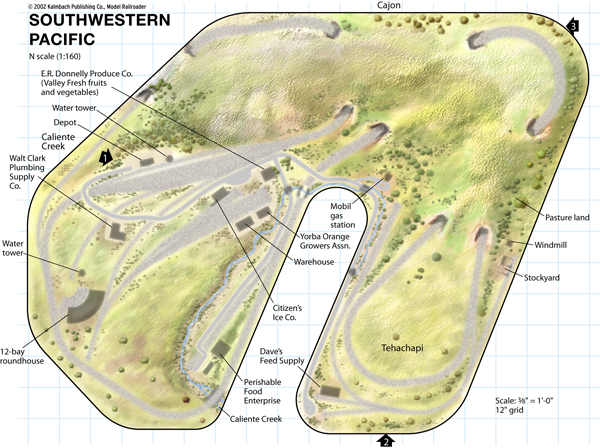
Track plan at a glance Name: Southwestern Pacific Scale: N (1:160) Size: 13′-6″ x 18′-0″ Prototype: Atchison, Topeka & Santa Fe and Southern Pacific Period: transition era Style: island with walk-in aisle Mainline run: 90 feet Minimum radius: 20″ Minimum turnout: no. 8 Maximum grade: 2 percent Originally appeared in the January 2003 issue of […]
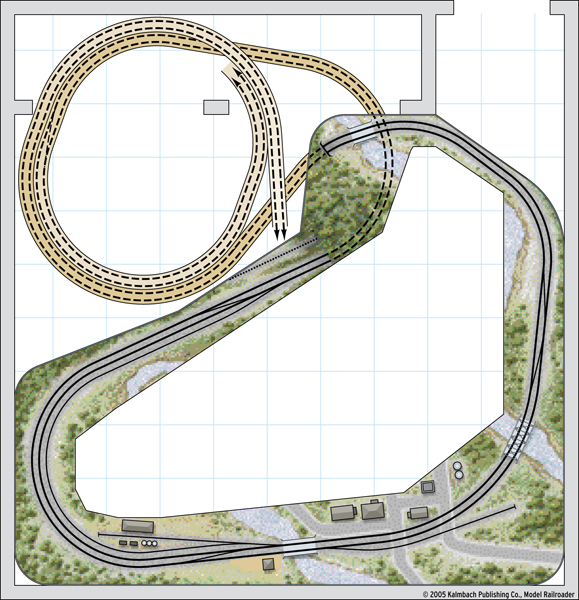
Track plan at a glance Name: Kearney & Black Hills RR Scale: HO Originally appeared in the May 2005 issue of Model Railroader. Click here to download a PDF of this track plan […]
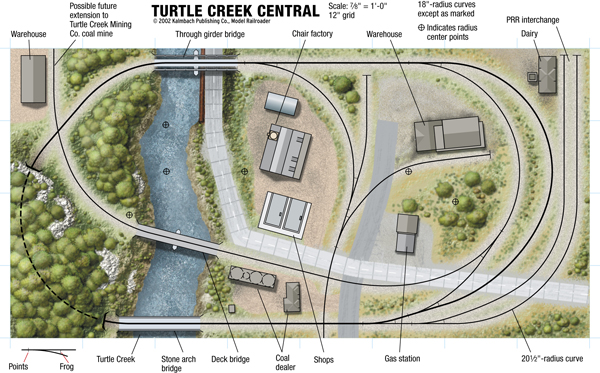
Track plan at a glance Name: Turtle Creek Central Scale: HO (1:87.1) Size: 4 x 8 with 2 x 6 foot extension Minimum radius: 18″ Minimum turnout: no. 4 Originally appeared in the January 2003 issue of Model Railroader. Also appeared in 102 Realistic Track Plans. Click here to download a PDF of this track […]